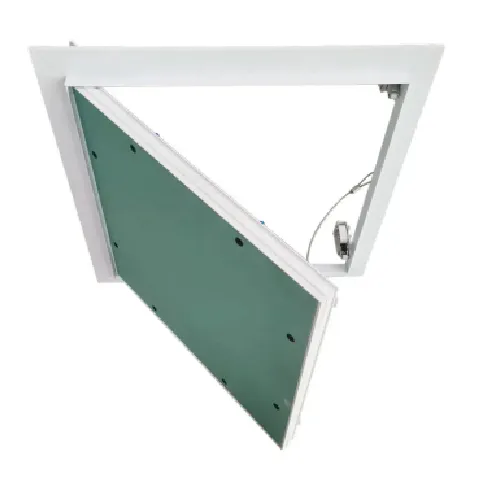- Afrikaans
- Albanian
- Amharic
- Arabic
- Armenian
- Azerbaijani
- Basque
- Belarusian
- Bengali
- Bosnian
- Bulgarian
- Catalan
- Cebuano
- Corsican
- Croatian
- Czech
- Danish
- Dutch
- English
- Esperanto
- Estonian
- French
- German
- Greek
- Hindi
- Indonesian
- irish
- Italian
- Japanese
- Korean
- Lao
- Malay
- Myanmar
- Norwegian
- Norwegian
- Polish
- Portuguese
- Romanian
- Russian
- Serbian
- Spanish
- Swedish
- Thai
- Turkish
- Ukrainian
- Uzbek
- Vietnamese
نوفمبر . 18, 2024 09:25 Back to list
Ceiling Access Panel Dimensions and Sizes for Easy Installation and Maintenance
Understanding Ceiling Access Panel Sizes A Comprehensive Guide
Ceiling access panels play a crucial role in the functionality and maintenance of various spaces, from residential homes to commercial buildings. These panels provide essential access to plumbing, electrical wiring, and HVAC systems that are often concealed behind ceilings. However, choosing the appropriate size for these access panels is vital to ensure both practicality and aesthetics. This article explores the various sizes of ceiling access panels, their applications, and factors to consider when selecting the right one for your needs.
Access panels come in various sizes, typically measured in inches. Common dimensions include 12x12 inches, 14x14 inches, 24x24 inches, and 24x36 inches, but custom sizes are also available to meet specific requirements. The size of the access panel you choose will largely depend on the purpose it serves. For instance, smaller panels (like 12x12 inches) are ideal for accessing light fixtures or small ducts, while larger panels (such as 24x36 inches) may be necessary for HVAC systems or plumbing repairs that require significant space for access.
When determining the appropriate size for an access panel, consider the following factors
1. Accessibility Needs Evaluate what needs to be accessed. If the area behind the panel requires frequent access for maintenance, a larger panel may be more appropriate to facilitate easy entry and movement.
ceiling access panel sizes

2. Location The location of the access panel also influences its size. Panels installed in high ceilings or hard-to-reach areas may require larger dimensions to allow for comfortable access without the need for extensive scaffolding or ladders.
3. Aesthetic Considerations While functionality is crucial, aesthetics should not be overlooked. Larger access panels can be more noticeable and may not blend well with the surrounding ceiling, making it essential to choose a size that minimizes visual impact while still serving its purpose.
4. Building Codes Always check local building codes and regulations. Some jurisdictions have specific requirements regarding ceiling access panels, including size, installation methods, and materials used.
5. Material and Design The material of the access panel can also affect its durability and aesthetics. Panels are typically made from materials such as steel, plastic, or drywall. Choose a style that complements the ceiling finish and overall decor of the space.
In summary, selecting the right size for a ceiling access panel is critical. By considering the specific access needs, location, aesthetic preferences, and building regulations, you can make an informed decision that will ensure efficient maintenance and enhance the overall functionality of the space. With the right access panel in place, you'll achieve a seamless blend of form and function in your ceilings.
-
Transform Interiors with PVC Gypsum Ceiling: A Stylish, Durable, and Moisture-Resistant SolutionNewsMay.19,2025
-
The Smart Interior Upgrade: Discover the Durability and Versatility of Gypsum Ceiling Access Panel SolutionsNewsMay.19,2025
-
The Smart Choice for Interior Design: Discover the Value of PVC Gypsum Ceiling SolutionsNewsMay.19,2025
-
Mineral Fiber Ceiling Tiles: The Smart Blend of Performance and AestheticsNewsMay.19,2025
-
Mineral Fiber Ceiling Tiles: The Superior Choice Over Gypsum for Sound and Fire SafetyNewsMay.19,2025
-
Mineral Fiber Ceiling Tiles: Eco-Friendly Strength and Style for Every CeilingNewsMay.19,2025







